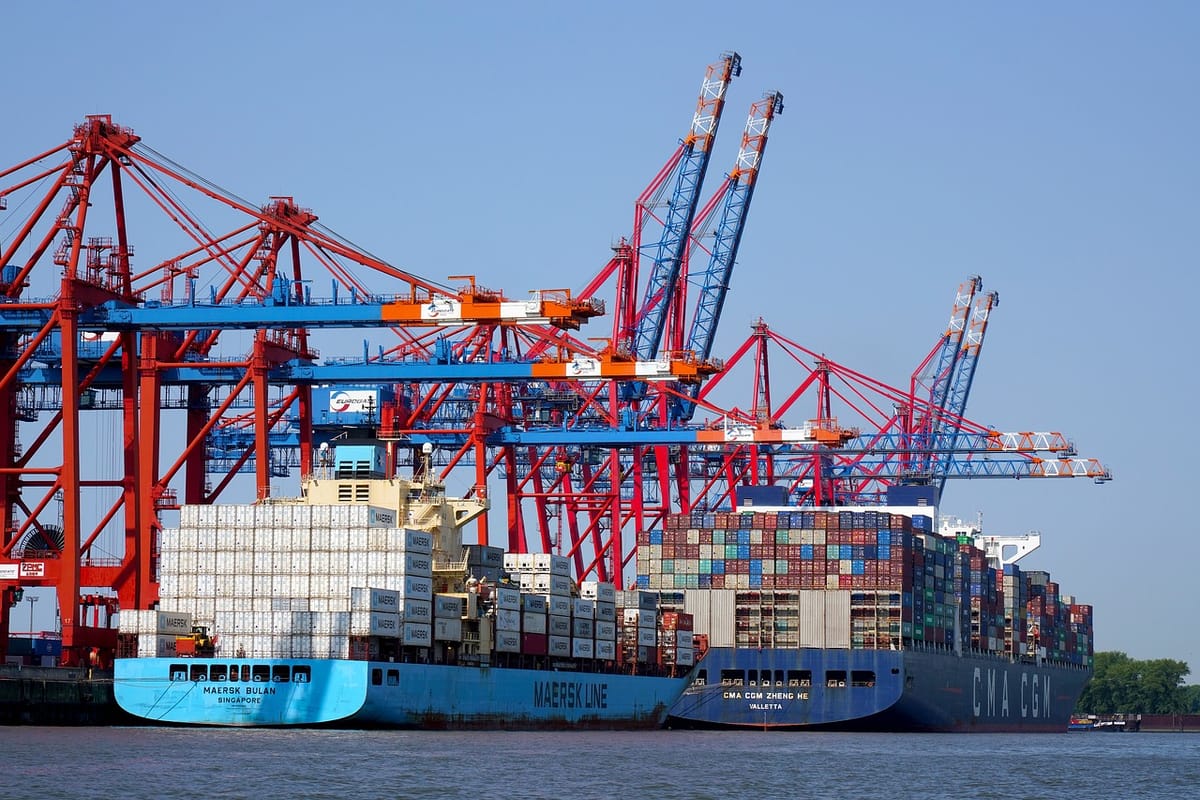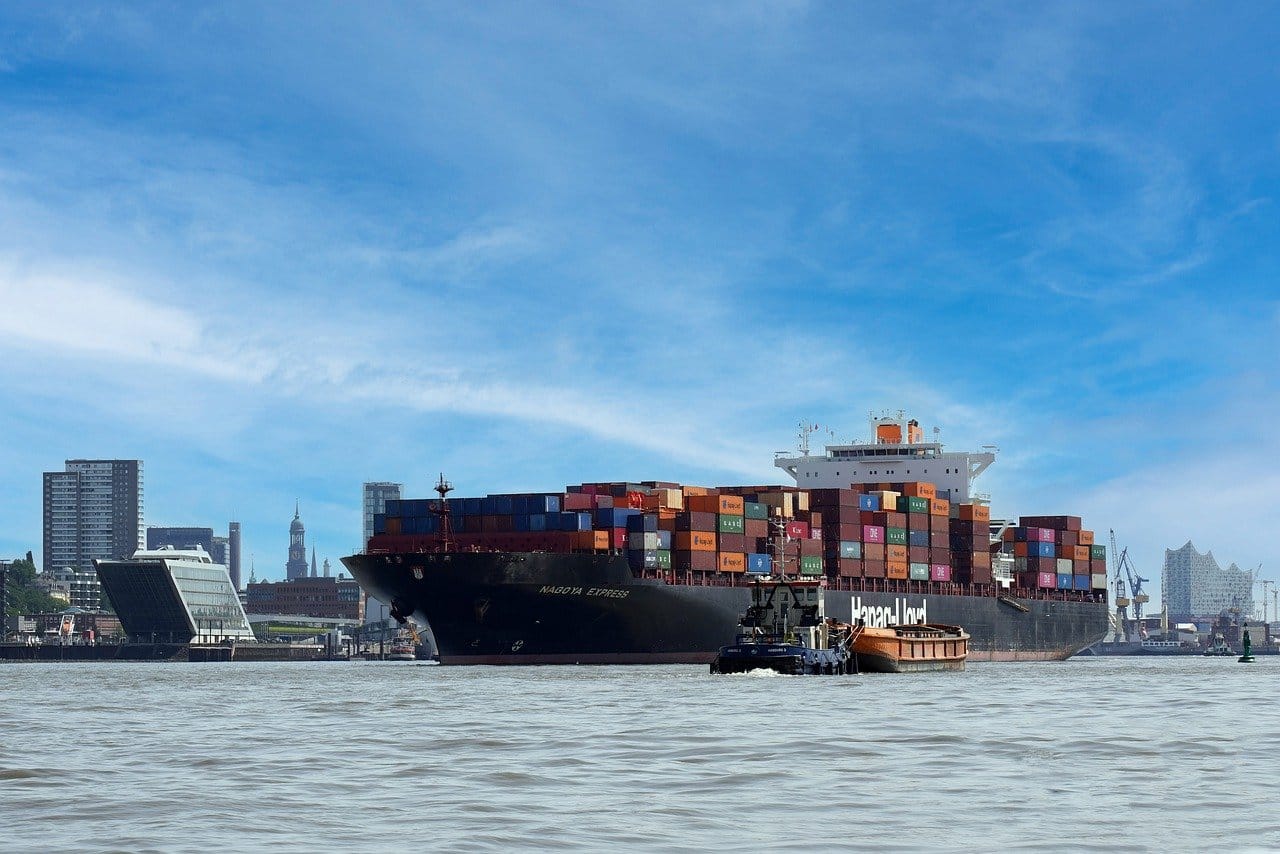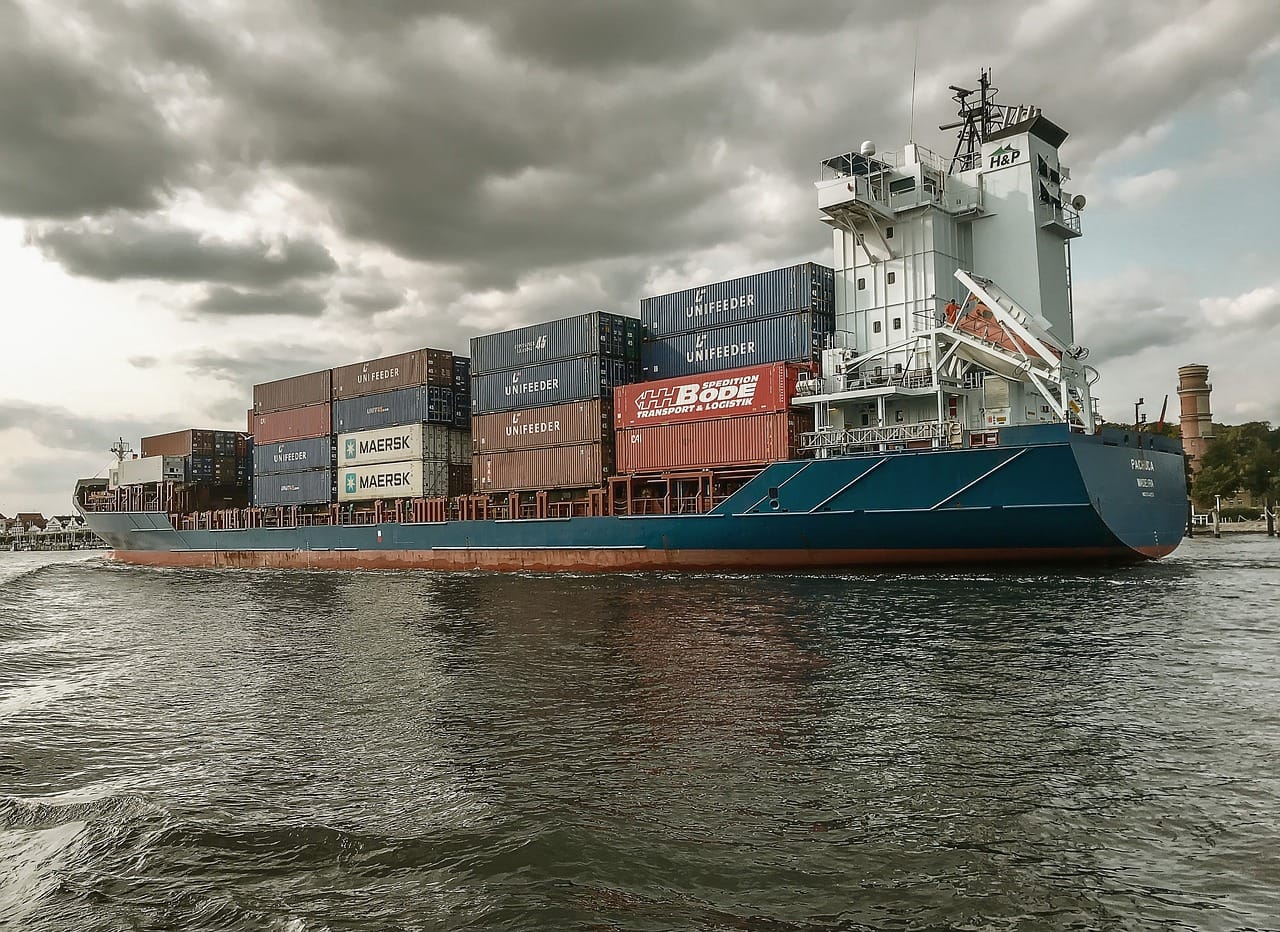Navigating the Global Supply Chain Crisis | Key Strategies for Resilience
Navigate the global supply chain crisis with resilience. Discover key strategies to overcome challenges and ensure business continuity

Understanding the Global Supply Chain Crisis
As a global business owner, understanding the ongoing supply chain crisis is crucial for navigating the current economic landscape. The global supply chain crisis refers to the disruption and imbalance in the flow of goods and services across international borders. This crisis has been exacerbated by a multitude of factors, including the COVID-19 pandemic, geopolitical tensions, and natural disasters. The intricate web of interconnected suppliers, manufacturers, and distributors has been significantly impacted, leading to widespread shortages, delays, and increased costs. To effectively navigate this crisis, it is essential to comprehend its underlying causes and the implications it poses for businesses worldwide.
The supply chain crisis has had a profound impact on businesses across various industries. The disruption has resulted in significant delays in the delivery of raw materials and finished products, leading to production slowdowns and increased lead times. Moreover, the crisis has also led to a surge in transportation costs, as companies struggle to secure available shipping capacity amidst the global logistical challenges. The impact has been felt not only by businesses but also by consumers, who are experiencing product shortages and price hikes. Understanding the depth of these repercussions is vital for devising effective strategies to mitigate the crisis' effects on global supply chains.
To address the global supply chain crisis, it is imperative to comprehend the logistics challenges that have emerged in the current environment. The pandemic has significantly disrupted transportation networks, leading to congestion at ports and border crossings. Moreover, labor shortages and stringent health and safety protocols have further complicated the movement of goods. Additionally, the crisis has exposed vulnerabilities in global trade, with trade restrictions and geopolitical tensions hindering the smooth flow of goods. By gaining a comprehensive understanding of these logistical challenges, businesses can proactively strategize and implement solutions to enhance their supply chain resilience.
Impact Analysis of the Supply Chain Crisis
The impact analysis of the supply chain crisis offers valuable insights into the widespread repercussions experienced by businesses on a global scale. One of the primary consequences of the crisis is the heightened risk exposure faced by companies operating within complex supply networks. The disruptions have magnified the vulnerabilities inherent in relying heavily on a limited number of suppliers or geographic regions, leading to increased operational risks and supply chain volatility. Furthermore, the crisis has exposed the interdependence of global supply chains, as disruptions in one region can trigger ripple effects across multiple industries and markets, amplifying the overall impact.

The supply chain crisis has also underscored the critical importance of effective risk management and business continuity planning for organizations. Companies have been forced to reassess their risk exposure and develop robust contingency plans to navigate through the turbulent environment. The crisis has highlighted the need for proactive risk mitigation strategies, such as diversifying supplier bases, implementing redundant logistics routes, and leveraging technology to enhance supply chain visibility. Additionally, the focus on business continuity planning has intensified, with businesses recognizing the necessity of building agile and adaptable supply chain frameworks to withstand future disruptions.
Amidst the supply chain crisis, the imbalance between supply and demand has been a central concern for businesses worldwide. Fluctuating consumer demand, coupled with production constraints, has led to significant supply-demand imbalances across various industries. This has resulted in inventory shortages, stockouts, and extended lead times, posing challenges for businesses in meeting customer expectations and maintaining operational efficiency. Understanding the intricacies of supply-demand imbalances is crucial for formulating targeted strategies to rebalance inventories, optimize production schedules, and enhance demand forecasting capabilities.
Logistics Challenges in the Global Supply Chain
The logistics challenges in the global supply chain have been a defining aspect of the ongoing crisis, presenting formidable obstacles for businesses in managing the movement of goods across international borders. The pandemic-induced disruptions have significantly strained transportation networks, with container shortages, port congestion, and reduced air cargo capacity becoming prevalent issues. These challenges have led to unprecedented delays in shipping, escalating freight costs, and logistical bottlenecks, impacting the timely delivery of goods and increasing operational complexities for businesses.
Furthermore, the logistics challenges have been compounded by the evolving regulatory landscape and trade restrictions, which have introduced additional complexities and uncertainties into global trade. Heightened customs and border control measures, coupled with stringent health and safety protocols, have lengthened clearance times and increased administrative burdens for businesses engaged in cross-border trade. The dynamic nature of these logistics challenges necessitates a proactive approach to navigate the complexities of international logistics and ensure the uninterrupted flow of goods within the global supply chain.
In response to the logistics challenges, businesses are increasingly focusing on enhancing manufacturing reliability to mitigate the disruptions caused by the crisis. The unpredictability in the availability of raw materials, components, and production capacity has compelled companies to reevaluate their manufacturing processes and adopt measures to bolster reliability. This includes implementing agile production systems, diversifying sourcing options, and fostering closer collaboration with key suppliers to minimize supply chain disruptions and maintain consistent manufacturing output. By addressing the logistics challenges through enhanced manufacturing reliability, businesses can fortify their operational resilience and adaptability in the face of ongoing supply chain uncertainties.
Strategies for Supply Chain Resilience
In light of the global supply chain crisis, implementing strategies for supply chain resilience is imperative for businesses seeking to navigate the complexities of the current environment. Proactive risk management and business continuity planning are foundational elements of supply chain resilience strategies. Businesses are increasingly leveraging advanced risk assessment tools, scenario planning, and supply chain mapping techniques to identify vulnerabilities and develop comprehensive risk mitigation strategies. Moreover, the integration of digital technologies, such as advanced analytics and real-time supply chain visibility solutions, enables organizations to enhance their responsiveness to disruptions and build greater resilience into their supply chain operations.
Addressing supply-demand imbalances is a critical aspect of supply chain resilience strategies. Businesses are adopting demand-driven approaches, leveraging data analytics and customer insights to align production schedules and inventory levels with dynamic market demands. By optimizing inventory management, implementing agile production processes, and enhancing demand forecasting accuracy, organizations can effectively manage supply-demand imbalances and ensure operational continuity amidst fluctuating market dynamics. Additionally, collaborative partnerships with suppliers and distributors play a pivotal role in establishing responsive supply chains that can adapt to changing demand patterns and mitigate the impact of supply chain disruptions.
Enhancing manufacturing reliability is another key strategy for building supply chain resilience in the face of the ongoing crisis. Businesses are reevaluating their manufacturing strategies to diversify sourcing options, invest in flexible production capabilities, and implement robust quality control measures. The adoption of lean manufacturing principles, just-in-time inventory management, and agile production systems enables organizations to enhance their manufacturing reliability and responsiveness to changing market conditions. By fortifying manufacturing reliability, businesses can minimize production disruptions, mitigate supply chain risks, and maintain consistent product availability to meet customer demand.
Risk Management and Business Continuity
Effective risk management and business continuity measures are paramount for businesses navigating the complexities of the global supply chain crisis. Risk management encompasses the identification, assessment, and mitigation of potential supply chain disruptions, enabling businesses to proactively address vulnerabilities and build resilience. By conducting comprehensive risk assessments, businesses can identify critical dependencies, assess the impact of potential disruptions, and develop targeted risk mitigation strategies to safeguard their supply chain operations. Additionally, the integration of robust business continuity plans, including contingency protocols, alternate sourcing strategies, and crisis response frameworks, empowers organizations to sustain operational continuity in the face of unforeseen disruptions.

The integration of advanced risk management technologies and supply chain visibility solutions is pivotal for enhancing risk management capabilities and bolstering business continuity. Leveraging predictive analytics, machine learning algorithms, and real-time monitoring tools enables businesses to proactively identify potential disruptions, anticipate supply chain risks, and orchestrate agile responses to mitigate their impact. Furthermore, the implementation of collaborative risk management frameworks, encompassing close partnerships with key suppliers, logistics providers, and industry peers, reinforces the collective resilience of the supply chain ecosystem and facilitates coordinated crisis response strategies in the event of disruptions.
Business continuity planning encompasses a holistic approach to ensure operational resilience and continuity in the face of supply chain disruptions. This includes developing alternate sourcing strategies, establishing redundant logistics routes, and implementing robust inventory management practices to mitigate the impact of disruptions on production and distribution activities. Moreover, the adoption of agile supply chain frameworks, characterized by flexible production processes and responsive inventory management, enables businesses to swiftly adapt to changing market conditions and mitigate the impact of supply chain disruptions on customer service levels. By prioritizing risk management and business continuity, businesses can fortify their resilience to navigate the complexities of the global supply chain crisis.
Optimizing Transportation Networks
Optimizing transportation networks is a critical focus area for businesses seeking to enhance their supply chain resilience amidst the ongoing crisis. The disruption in global logistics has underscored the importance of developing agile and diversified transportation strategies to mitigate the impact of logistical challenges on the timely delivery of goods. Businesses are reevaluating their transportation networks, exploring multimodal transportation options, and leveraging digital logistics platforms to optimize routing, reduce transit times, and minimize the exposure to transportation disruptions. By enhancing transportation network optimization, businesses can bolster their supply chain resilience and ensure the efficient movement of goods across international borders.
The adoption of advanced logistics technologies, such as dynamic route optimization systems, real-time shipment tracking, and predictive analytics, enables businesses to enhance the visibility and agility of their transportation networks. By leveraging real-time data and analytics, organizations can proactively identify transportation bottlenecks, anticipate potential disruptions, and orchestrate agile responses to mitigate the impact on delivery schedules. Furthermore, the integration of collaborative logistics platforms, encompassing close partnerships with carriers, freight forwarders, and customs brokers, facilitates seamless coordination and communication across transportation networks, enabling businesses to navigate logistical challenges and sustain the uninterrupted flow of goods.
In response to the logistics challenges, businesses are increasingly embracing strategic sourcing and procurement strategies to optimize transportation networks and mitigate the impact of supply chain disruptions. This includes diversifying sourcing options, establishing strategic partnerships with reliable carriers and logistics service providers, and implementing agile procurement processes to facilitate the timely and cost-effective movement of goods. Moreover, the adoption of sustainability-focused transportation initiatives, such as green logistics practices and carbon-neutral transportation solutions, enables businesses to enhance the resilience and sustainability of their transportation networks while mitigating the environmental impact of logistics operations.
Economic Effects of Supply Chain Disruptions
The economic effects of supply chain disruptions have reverberated across industries, impacting businesses, consumers, and global trade dynamics. The widespread disruptions have led to increased production costs, escalated transportation expenses, and supply-demand imbalances, contributing to inflationary pressures and heightened operating expenses for businesses. Moreover, the surge in logistics costs and delays has translated into higher prices for consumers, eroding purchasing power and influencing consumer spending patterns. The economic effects of supply chain disruptions have also been manifested in global trade dynamics, with trade imbalances, supply shortages, and increased protectionism shaping the evolving landscape of international commerce.
The economic landscape has been further influenced by the supply chain disruptions through their impact on operational efficiency and cost structures. Businesses have grappled with heightened operational complexities, increased lead times, and fluctuating production costs, leading to diminished operational efficiency and profitability. The disruptions have necessitated businesses to reevaluate their cost structures, optimize their supply chain operations, and adopt agile business models to mitigate the economic impact of supply chain disruptions. Additionally, the economic effects have prompted businesses to explore innovative strategies for enhancing their operational resilience and sustainability in the face of ongoing supply chain uncertainties.
The economic effects of supply chain disruptions have also underscored the imperative for businesses to prioritize supply chain optimization initiatives to mitigate the impact of disruptions on their cost structures and operational efficiency. This includes leveraging advanced supply chain analytics, implementing lean inventory management practices, and optimizing production processes to streamline operations and minimize wastage. By fostering a culture of continuous improvement and operational excellence, businesses can enhance their cost competitiveness and resilience, mitigating the economic effects of supply chain disruptions and positioning themselves for sustained growth and profitability in the evolving business landscape.
Crisis Response Strategies for Global Supply Chains
In formulating crisis response strategies for global supply chains, businesses must prioritize agility, collaboration, and resilience to effectively navigate through the ongoing supply chain crisis. The dynamic nature of supply chain disruptions necessitates an agile response framework that enables businesses to swiftly adapt to changing market conditions and mitigate the impact of disruptions on their operations. This includes establishing cross-functional crisis management teams, developing scenario-based response plans, and conducting regular drills and simulations to test the effectiveness of crisis response strategies. Moreover, the integration of real-time supply chain visibility solutions and advanced analytics empowers businesses to monitor disruptions, assess their impact, and orchestrate responsive actions to minimize their adverse effects.
Collaboration is a foundational element of crisis response strategies for global supply chains, as businesses seek to foster close partnerships with key suppliers, logistics providers, and industry peers to collectively navigate through disruptions. Establishing collaborative crisis response frameworks, encompassing joint risk assessments, coordinated contingency planning, and information-sharing protocols, reinforces the resilience of the supply chain ecosystem and facilitates swift and coordinated responses to mitigate the impact of disruptions. Moreover, collaborative partnerships enable businesses to leverage shared resources, expertise, and capabilities to enhance their collective resilience and sustain operational continuity in the face of supply chain disruptions.
Resilience-building initiatives are central to crisis response strategies for global supply chains, as businesses aim to fortify their supply chain operations to withstand and recover from disruptions. This includes investing in robust risk management capabilities, enhancing business continuity planning, and fostering a culture of adaptability and innovation within the organization. By prioritizing resilience-building initiatives, businesses can proactively mitigate the impact of disruptions, minimize downtime, and sustain operational continuity, positioning themselves for long-term success in the face of ongoing supply chain uncertainties.
In conclusion, the global supply chain crisis has presented unprecedented challenges for businesses worldwide, impacting operational resilience, cost structures, and global trade dynamics. Understanding the intricate dynamics of the crisis, including the logistics challenges, economic effects, and risk management imperatives, is essential for businesses seeking to navigate through the complexities of the current environment. By implementing proactive strategies for supply chain resilience, including addressing supply-demand imbalances, enhancing manufacturing reliability, optimizing transportation networks, and prioritizing crisis response initiatives, businesses can fortify their operational resilience and sustainability in the face of ongoing supply chain uncertainties. Embracing collaboration, agility, and resilience-building initiatives is pivotal for businesses to effectively navigate through the supply chain crisis and emerge stronger, more adaptable, and well-positioned for sustained growth and success in the evolving global business landscape




